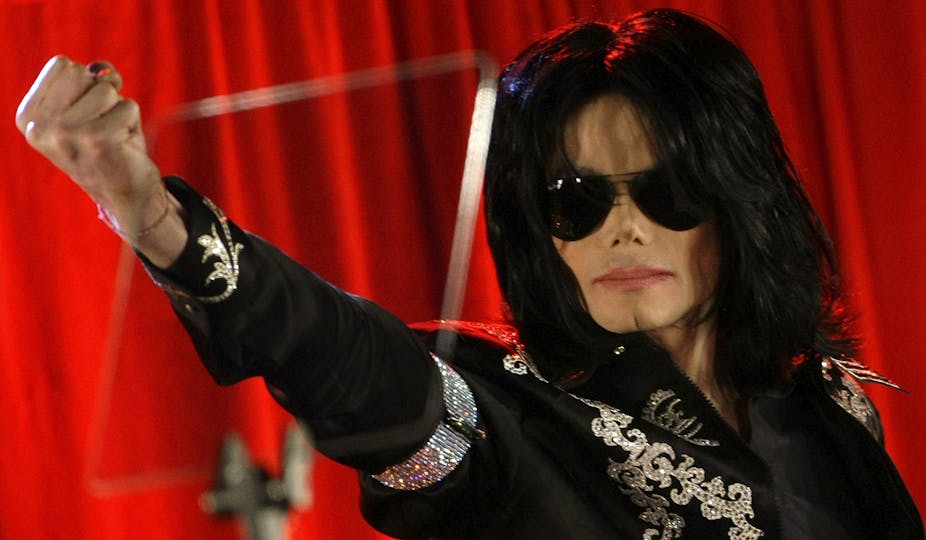Earlier this week, Forbes announced in its “Top-Earning Dead Celebrities of 2015” list that Michael Jackson has been crowned once again as this year’s most lucrative ghost, having earned a whopping $115m. Elvis Presley is no longer faring so well: he topped the list for many years, until pushed to second place in 2009.
Life after death is not exclusive to these two megastars by any means: plenty of other well-known figures who have shuffled off this mortal coil continue to haunt us – not just at Halloween, but year round.
For many famous individuals, death has been a successful career move. As well as Jackson, the ghostlike apparitions of Fred Astaire, Audrey Hepburn, Marilyn Monroe and Steve McQueen have all been sighted in recent decades. Images of the dead are attached to everything from clothing to chocolate to perfume.
Some performers have even been known to return to tread the boards after their death. This happened in 1992 when Natalie Cole performed a virtual duet with her father Nat King Cole (appearing on a screen behind her). And, more perturbingly, last year – when Michael Jackson’s holographic resurrection left fans both thrilled and uncomfortable.
Life after death is not limited to Hollywood stars and the music elite – Albert Einstein has a vibrant celebrity career in his afterlife via his own range of T-shirts, posters and even tablets.
Who owns the ghosts?
But of course, ghosts such as these don’t appear of their own volition. While living celebrities can be volatile and demanding, in death they become brands, far easier to manage (and exploit).
The advertising industry has been a principle factor in the rush to resurrect dead celebrities. Intellectual property or “image ownership” is increasingly profitable both in and after life. But exerting control over the non-tangible remains complex and a whole speciality of law has been developed in order to deal with image ownership.
There are now businesses that specialise in owning dead celebrities in order to manage and maximise earnings from their posthumous career. Authentic Brand Group, for example, purchased the rights to Marilyn Monroe in 2011. They have subsequently been investing in her brand by collaborating with US retailer Macy’s in the development of a clothing line inspired by Monroe.

So ownership of image after death has opened a range of issues beyond those experienced by celebrities in life. The rights to dead celebrities is largely passed to the direct relatives. But this has been controversial: just look at the afterlife of James Dean – whose family unscrupulously sold Dean spectres left, right and centre.
Then there’s the case of Fred Astaire, whose widow granted permission for his image from the 1951 film Royal Wedding to be used in an advertisement for Dirt Devil Vacuum’s in 1997. His daughter subsequently voiced her disapproval, saying she was “saddened that after Fred’s wonderful career, he was sold to the devil”.
Avoiding afterlife
Given this minefield, consideration of image protection is now crucial for celebrities not only in life but also after death – and many want to have a say from beyond the grave. So not all celebrities pursue a career in their afterlife. Before his death in August 2014, Robin Williams safeguarded himself against image resurrection after death. The Robin Williams Trust has a deed containing a detailed description of how Williams intended to be used in any publicity.
He passed on rights to his name, signature, photograph and likeness to the Windfall Foundation, set up in his name. So Williams protected his image from resurrection in any form. He cannot be used to haunt any films or adverts – but only until 2039. After that his situation is a lot more precarious.
This new form of privacy contract based on and around new technologies successfully maintains ownership and control of image after death – for a while. The need to exert control over post-mortem image and income is increasingly an issue for the rich and famous. Avoiding a life after death is possible, but needs to be very carefully legally framed.

